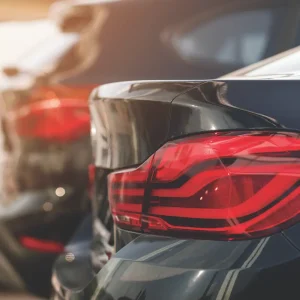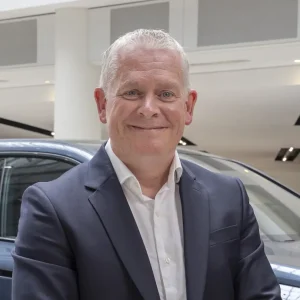Citroen is implementing a change of strategy across the business to increase fleet sales, and one key area it wants to tackle is the public’s perception of its brand image. Rachel Burgess talks to fleet boss Andrew Wady about his plans
According to Citroen fleet boss Andrew Wady, the brand’s biggest problem remains its image.
The challenge for the French carmaker, he says, is improving it: “Our products have come on leaps and bounds, but I think the average Joe in the street’s perception hasn’t moved forward nearly as much as the cars have.
“The brand in France is very different to here. We have a strong proposition across the board. We need to provide good-looking cars to break into the marketplace and, indeed, we are seeing uplift over preceding models. The only thing holding us back is the brand image.”
Half-year fleet sales for Citroen in 2011 totalled 21,076 cars and 10,180 vans. This makes up about 52% of its total sales, compared with a market as a whole that stands at 58%, says Wady. He adds that fleet registrations are slightly down year-on-year, and attributes this to strong retail sales and pulling out of hire channels. Currently, with the exception of 100 vehicles, Citroen is not involved in rental. “There were 2000-3000 vehicles in rental this year initially,” says Wady. “I’d look at getting back into it with a limited volume. The risk of rental is undermining your RV position, but it can do quite a good job of raising the profile of vehicles.
“We did a batch of 200-300 DS3 with Avis, as part of its premium fleet, which was good.” He anticipates having up to 3000 units in rental next year.
RVs is one area that Jason King, previously head of market intelligence at Eurotax Glass’s, has been tasked with tackling, in his role as manager – whole life-costs at Citroen. At the time of his appointment in January this year, Citroen said King would “seek to communicate news of fuel-saving developments, such as the brand’s full-electric micro-hybrid and diesel hybrid drivetrains, to key industry influencers, and will help to effectively position Citroen products in the fleet marketplace”. Wady adds that King’s focus is day-to-day relationships with the industry.
King has recognised that launch prices weren’t brilliant and he has also worked with the product team to improve specification, says Wady. For example, the upcoming DS5 (see ‘DS brand takes shape’, opposite) has had its specification tweaked to include alloys, leather and satnav, and the recently launched DS4 has been upgraded to include alloys to make it look more sporty, as the UK market desires.
Another manufacturer tactic for improving RVs is bringing back used cars into the network. Wady explains: “We have a strong used car proposition. About 50% of cars come back into the used car proposition.”
Wady believes that a fleet/retail mix of 50/50 is “about right”, although he sees the overall fleet market growing next year to up to 60%. “We see more customers buying through contract hire. And problems with retail market won’t rectify themselves straight away.
“The other reason [for fleet growth] is that it’s clear a lot of manufacturers, as the retail market has weakened, are using fleet to force volume into the marketplace.”
Growth in fleet for Citroen has come from both national fleet sales and local business centre fleet sales. Of 180 dealers, half of these are deemed business centres, which ensures good coverage. “They have to commit to a dedicated sales person and there’s quite a lot of aftersales standards,” says Wady. The business centres will have been going for two years by year-end and are going “really well actually”, aided by a team of four regional business centre managers, working with the dealers. Wady sees more growth with dealer SME deals, but says there has been a perceptional issue that Citroen is only geared up for big business such as Royal Mail.
He also sees growth with leasing and rentals companies and expects fleet car sales to finish on 36,500 cars this year, and increase by 10% next year. Van volume is set to be 18,272 units in 2011, with an increase of 6% in 2012.
Citroen’s sub-brand, DS, is bringing more opportunity for fleet growth. The arrival of the DS3 last year, a supermini, set a high standard, but has limited interest in the business arena thanks to its three doors. However, the arrival of the DS4 and DS5 gives Wady a “a much better channel to get into the [fleet] sector”. He explains:?”DS gives us the opportunity to get into user chooser. And we’re having huge success with salary sacrifice this year. With DS going in there, it sits comfortable within a salary sacrifice scheme with low CO2 emissions.
He continues: “We have seven area managers talking to end user choosers. With the downturn in the economy, a lot of fleets restricted badges and we were being locked out a lot. That trend is now reversing.”
CBI, Citroen’s international business arm that’s based in Paris, signs pan-European deals and this is also helping the brand infiltrate some of the bigger leasing companies in the UK.
The DS5, falling into the upper-medium segment, enters a tough market, and is up against the powerhouses of the BMW 3-series and Audi A4. Wady acknowledges that in “many ways, BMW and Audi have a strong hold”. However, he also says:?”I don’t think it’s impossible to break it with the right volume expectation.” He adds that this is where improving the brand image is vital.
Wady continues: “We will tackle the 1-series and Golf segment first. But we have to go far with the DS5 and price will be less than the average 3-series. I genuinely think that the DS5 is significant enough in the marketplace that it has a much better chance of getting that cut-through. And I think the DS5 is able to deliver that promise of sportiness.” There has also been more time and energy put into the car’s interior, and the boot, at 465 litres, is five litres bigger than the 3-series.
The greenest version will be a 99g/km 200hp diesel-hybrid version, but Wady only expects it to account for 10-20% of sales. This is partly because of the price premium (set to be about £4k) but also because there will be diesels including a 110g/km offering. The DS5, priced between £24,000 and £30,000, allows Citroen to “reopen the door to fleets”, according Wady.
Across its range, sub-110g/km is the important thing for next year, says Wady, thanks to BIK banding changes next April, and sub-100g/km products are “more of a marketing thing” until then. However, Citroen already offers the electric C-Zero as well as the C1, C3, DS3 and C4 with 99g/km emissions. Wady adds that the 114g/km DS4 is currently being tweaked: “We hope to have a sub-110g/km version before next April.” There will also be a 87g/km C3 within six months.
Wady concludes: “The range is starting to change. We recognise we need to do a better job at launching vehicles. So far, there has been a promising reception to the product.”
DS brand takes shape
Citroen announced in 2009 that it would add a luxury car range under the historic DS banner. There are now two cars, the DS3 and DS4 available, with the DS5 recently unveiled at Frankfurt motor show.
DS3
The DS3 was the first DS car, launched last year, and size-wise sits alongside the C3, but above it for cost and equipment. It’s been largely well received and offers customers a high level of personalisation much like supermini rivals the Fiat 500 or Mini. It’s not hugely relevant to fleets, with only three-doors, but there is a 99g/km CO2 iteration that makes good tax sense, while residual values, often poor on Citroens, are better than expected for the DS3.
DS4
The arrival of the DS4 (below) makes the brand much more relevant in the fleet market. The flashier brother of the C4, Citroen hopes this model will break through the competitive lower medium territory with hopes for 60-70% of volume to be in the business sector. The carmaker claims most DS4 buyers will be new to the brand, with the car rivalling the likes of the Alfa Giulietta, BMW 1-series and Mini Countryman.
When launched in summer this year, a spokesman said: “This is focused on lifestyle and user choosers who want something a little different.
“We wanted to take the five-door practicality and add the coupe proposition. In this sector people like coupes but not everyone wants to live with the coupe proposition.”
DS5
Due in spring next year, the DS5 represents Citroen’s biggest challenge yet: to infiltrate the upper medium sector, dominated by premium German manufacturers. Using the PSA Peugeot Citroen’s new Hybrid4 diesel-electric tech (first appearing in the 3008 Hybrid4 later this year), the model will emit 99g/km alongside other petrol and diesel offerings. The hybrid’s battery pack results in around 20% less boot space.





